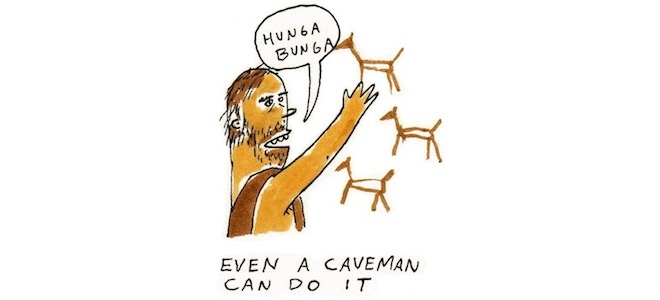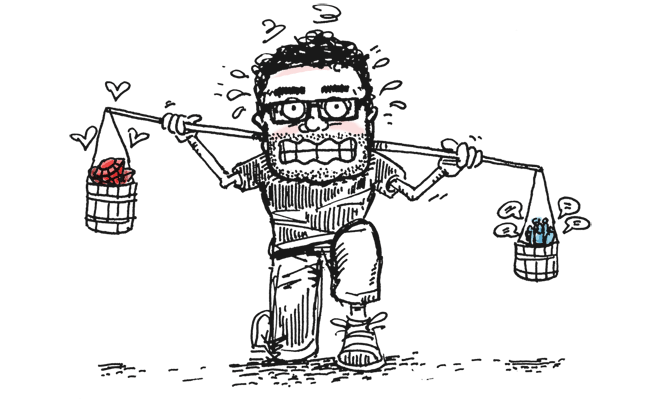Read that headline carefully. Note that I didn’t say everyone should start calling themselves artists and try to sell their paintings for thousands of dollars. I do, however, think the exercise of making a painting is a good one for all human beings.
Painting has been around almost as long as hunting and gathering, and there are very few activities that are so innate to our species. Resolving a painting is a puzzle, a maze, a riddle, a quest, all that. It is a process requiring a billion decisions. Want to try a great game? Put down that electronic device and pick up a brush. Get in touch with your human part. Even Michael Jackson’s former pet chimp, Bubbles, is doing it. Elephants do it. It’s a genus thing.

Getting started, the gathering part
You are going to need some paint, some instruments to paint with, and an object to paint on. Got a $100 bucks? That should be enough to get you started.
First off, don’t use really crappy paint. It is not impossible, but it is significantly harder to make a good painting with student grade paint. Get a set with eight to ten colors. This will cost you 35-50 bucks. Here’s one.
(Note: I’m spreading the links around between Blick, Utrecht, Amazon, and Cheap Joes. All are good options, as is Mom and Pop’s down the street. Look for sales.)
Next, get some brushes. Brushes can be crazy expensive. You don’t need fancy sable brushes to get started, but you shouldn’t get kid stuff either. Get a decent synthetic set with a variety of shapes: 20 – 30 bucks. I like
long handles because they can also be used to kill vampires.
Get something to paint on. Canvas works. Do you have your own woodshop and like to make things ten times more complicated than they need to be? No, then don’t stretch your own canvas. There are some great options at the store. Get a few canvasses so you can make mistakes. One of my former instructors told me that you always make your best paintings on shitty canvasses, and I have found that to be true wisdom.
Rig up an easel. You can paint on a tabletop or on the floor, but I think it is really important to learn how to paint from a vertical position. If you have the option, hanging a canvas on the wall and working from there is preferable to working horizontally on a table. There are Easels that cost as much as a ‘04 Lexus ES300. You don’t need that one. Start out with a $20 tabletop easel. If you have more room and this pursuit is going to be lasting, get a real easel. Later on you can store it with the treadmill.
One more thing. You will also need a palette and a cup. Paper towels and newspaper may also be useful. For a palette I recommend a sturdy, disposable, plastic plate. Anything non-porous and solid will do. Glass, marble, old electronics, sealed cardboard, or even another painting will work as a palette. For a cup use something substantial enough in size and stable enough in shape to hold brushes. Old soup cans work. So do plastic beer cups. I have even sawed off the top of a Gatorade bottle and used that. This cup will hold dirty paint water. Choose a cup that you will never want to drink out of again. You don’t want to drink dirty paint water.
Getting started, the hunting part
Let’s paint. If you are painting on the counter with a tabletop easel, put some newspaper or something else down so you don’t ruin the counter, you idiot. Also, take off that expensive suit. Next, put the blank canvas on the easel, raise it to a comfortable height, and take in the intimidating blankness of it all.
Now what? Well you haven’t finished setting up yet. You are going to have to find a place to set some stuff down. Find a little side table, or a stool, if you aren’t already working from a table, and put it on the right or left side of the canvas, depending on your dominant hand. Now, go fill the cup 72% of the way with water and set it on your table. Also find some space for your palette and some tubes of paint. Take out those brushes and drop two of them, bristles first, into the water.
You are ready to paint.






 I was on
I was on